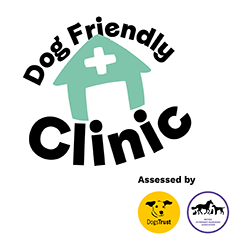One of the main concerns for owners and vets when treating an animal with cancer is that they have a good quality of life. However, many owners are worried that they will not be able to tell if their pet is suffering and although we all talk about ‘quality of life’ this is a hard concept to actually define.
One of the aspects of assessing the quality of life is determining whether the patient is in any pain. We know at Wear Referrals that many cancers in people cause chronic pain and treating this pain is an important part of the overall care plan. However, chronic pain can be very hard for owners and vets to spot in dogs and cats because the signs of it are often very subtle. Veterinary patients rarely cry out or whine with chronic pain as they have often learned to cope. Instead, we tend to see subtle changes in behaviour such as a reluctance to exercise or spending more time asleep. It may be that the patient stops a particular activity, such as jumping on the sofa or walking upstairs. These signs can often be confused with the animal ‘just slowing down’ or ‘getting older’. However, these small signs in a cancer patient may be an indication that they are in pain and should prompt a conversation with the vet. We have many options for treating pain in our cancer patients, from traditional painkillers to acupuncture and even radiotherapy.
Another problem we have in assessing quality of life is that it changes for every patient. For some dogs, a good quality of life means being able to run around in a field and chase a ball, whereas other dogs are happy having a potter round the garden. Therefore, the owners must communicate with the vet about what they think is important for their dog’s quality of life. Care and treatment plans should be individualised to the patient to take into account these concerns.
Appetite is another important factor to consider for an animal’s quality of life, but this will vary between patients. For example, a Labrador may be in quite a lot of pain but will continue to eat, whereas a cat may only feel mildly unwell and can stop eating. Many owners often use appetite as one of the main factors in assessing suffering in their pet but it is important to remember that some animals can be in significant discomfort and will continue to eat.
Palliative care is a phrase that is used a lot in veterinary medicine, particularly for animals with cancer. The focus of palliative care is on making life as good as possible by managing pain and other symptoms. We use palliative care in veterinary oncology when we choose not to pursue a specific anti-cancer treatment – this may be because we have exhausted all of the possible treatment options. However, owners may also choose palliative care over other forms of treatment for a variety of reasons and we always respect this decision. Veterinary Oncologists are very experienced at delivering palliative care and we can often suggest care plans for animals with cancer to make their remaining time as comfortable as possible.






